Roadside advertisements have become illegal across the Czech Republic, but artistic installation are not specifically banned. Rather than take their distinctive eagle-shaped signs down, Karlovarské minerální vody (KMV), the maker of Mattoni bottled water, has been covering them over with concept art.
But the Transport
Ministry is not fully impressed with the idea, and says the signs
still violate the law.
For the time being, six of KMV’s eagle signs can bee seen with artistic motifs. KMV just converted two more eagles, following on four it changed last summer. In total, KMV has 16 roadside eagles. They have not announced when the rest will be transformed.
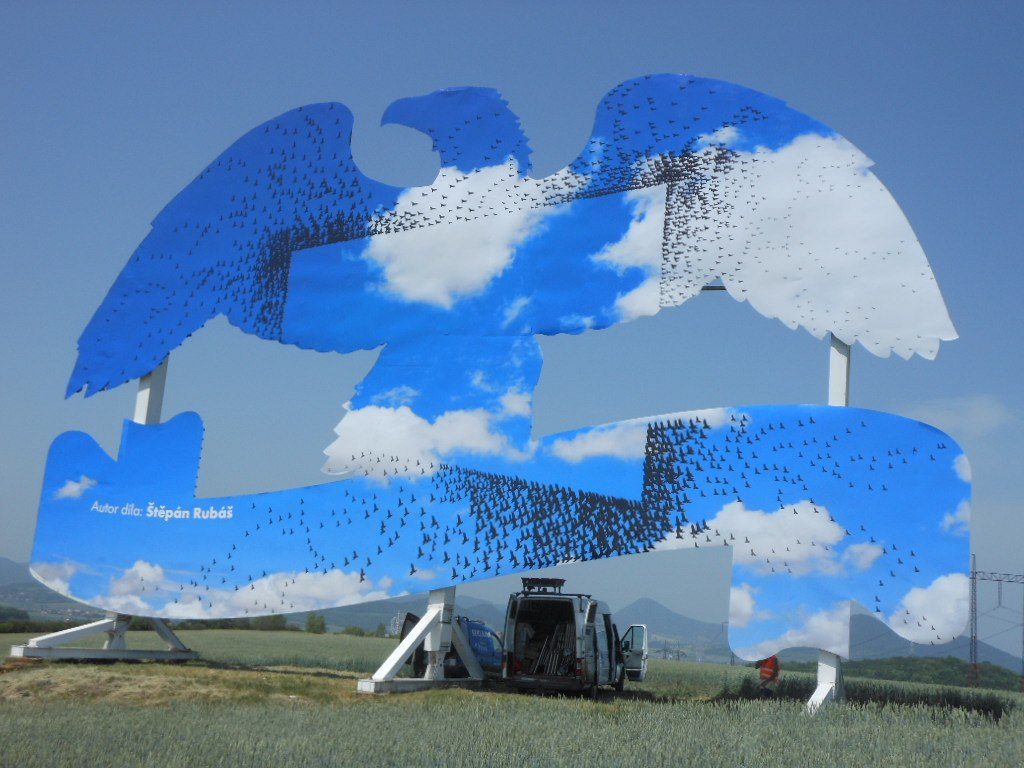
“Preparing each
individual project, getting permits from the authorities, adjusting
the status to a work of art, choosing a theme and making the
conversion itself takes a long time. So far, no specific deadlines
for other eagles have been set,” KMV spokeswoman Andrea Brožová
said.
The two new signs
are on the D8 motorway near Keblice in the Ústí nad Labem region
and D35 near Velký Újezd in the Olomouc region.
Two of the four signs unveiled last year were the work of an established artist, but KMV has worked with students since then. “After working with the world-famous graphic artist Míla Fürstová , we decided to give space to young artists from the Academy of Fine Arts,” KMV strategic marketing director Ondřej Postránský said.
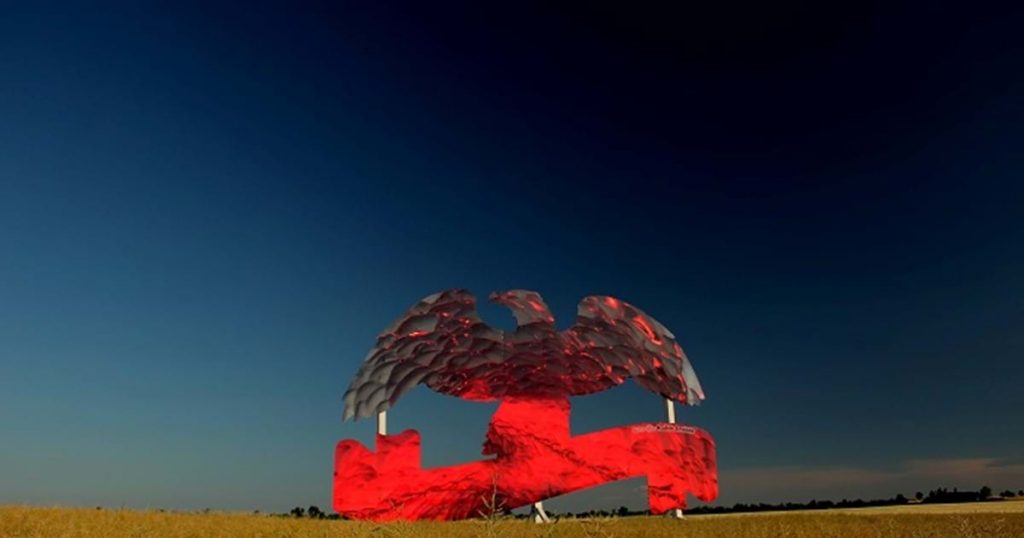
Both of the new signs are the work of students from the Academy of Fine Arts (AVU). The Keblice sign is called Window (Okno) by Štěpán Rubáš, and the one at Velký Újezd is History of Water (Historie Vody) by Radek Směták.
“Their suggestions excited us and the quality of work was definitely not a problem — on the contrary, we have something to draw on in the future that we are delighted with,” Postránský added.
Rubáš in his
Window design wanted to open the space up to imagination. “I
created an illusory window in which everyone can imagine their own
story. All you have to do is to see what is happening on the surface
and let everything be fantasy. Together we let the advertising
billboard disappear and create a work in the landscape,” he said.
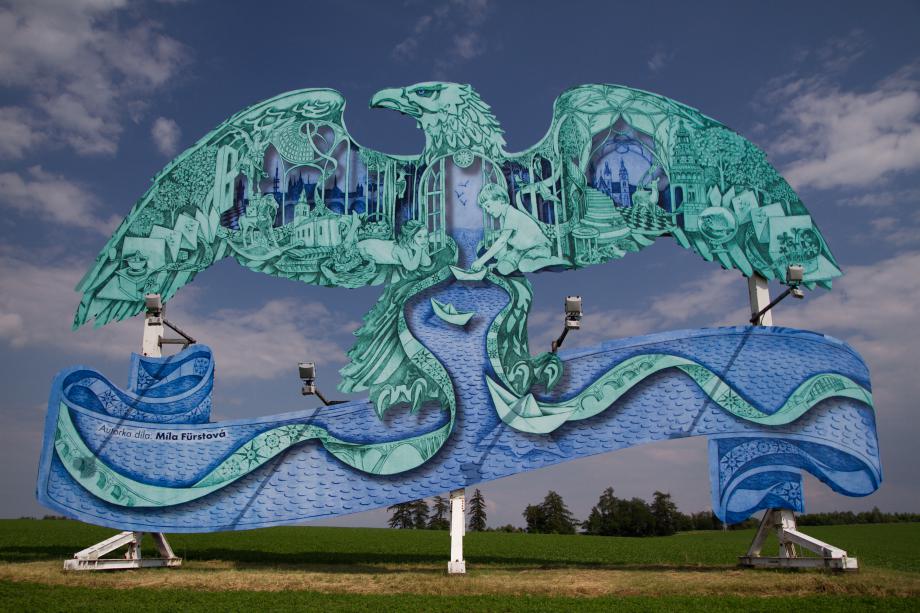
Směták took
inspiration from nature for his piece. “I am interested in the
history of water in terms of its occurrence in our country,
especially in the solid state. From that I come to the moment of the
iceberg’s melting from infrared radiation, which is emphasized by
the red color that disappears into the crevices,” he said.
The first two
advertising eagles to be converted were on the D1 motorway near Velké
Meziříčí, in the Vysočina region. One was by Míla Fürstová
and the other by art student Lucie Havlová. The next two were on the
D5 motorway, with one again by Míla Fürstová and the other by art
student Jan Hladík.
Míla Fürstová’s signs dealt with the idea of memory. “The wings of an eagle cover a dreamlike linear representation of the Czech landscape, as I wear it in my spirit, wherever I am in the world. I chose the colors so that the whole work merged with the landscape with a certain subtlety so that in some moments it merged with it, just as our memories merge with the reality we are experiencing,” Fürstová said.
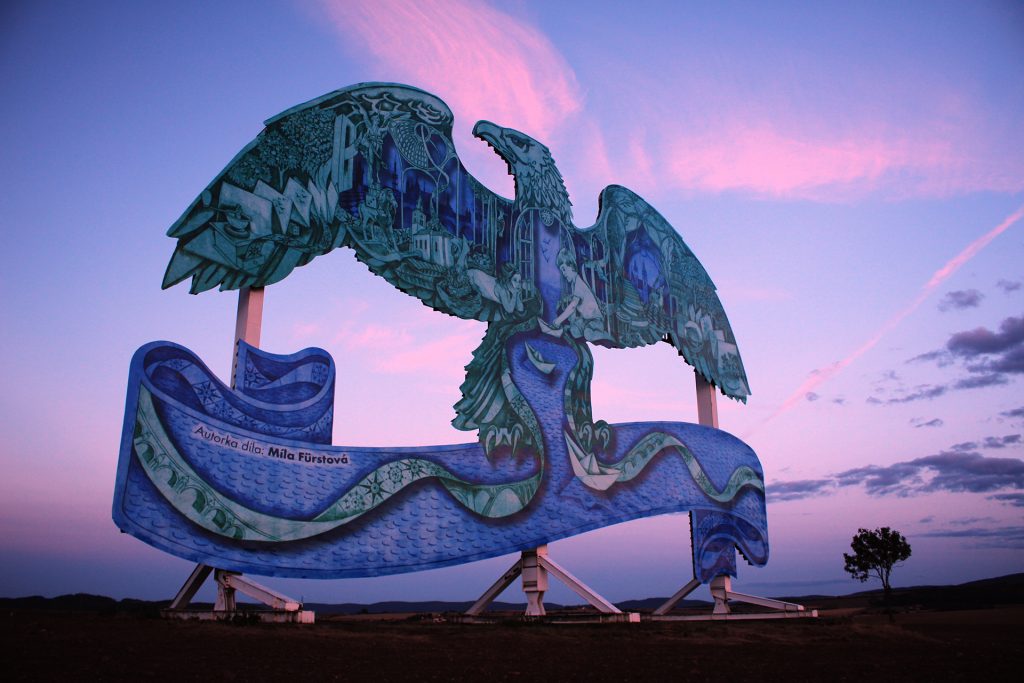
“Perhaps because I have been living in Britain for 20 years, I increasingly realize how unique and inspiring Czech landscape and architecture is. The Mattoni Eagles are part of this landscape for me, and they transform it into a theater stage. The story outlined in the motif of my eagle is a certain celebration of the childhood spent in the Czech Republic, which gave me wings to fly all over the world,” she added.
Lucie Havlová was
inspired by the concept of a road. “The highway itself is a link
that connects society into one. It is an important thoroughfare not
only in our country but also in Europe. My suggestion is inspired by
the traffic signs lining this road. It refers to distance and
symbolizes a vision of the future. We can find a gesture of endless
quality and continuing tradition in it,” she said.
Current land use caught the attention of Jan Hladík for his sign Deer in Rapeseed (Srna v řepce). “The design relies on wit and memorability. It deals with man entering into the landscape. It refers to the current use of agricultural land in industrial production and some negative impacts,” he said.
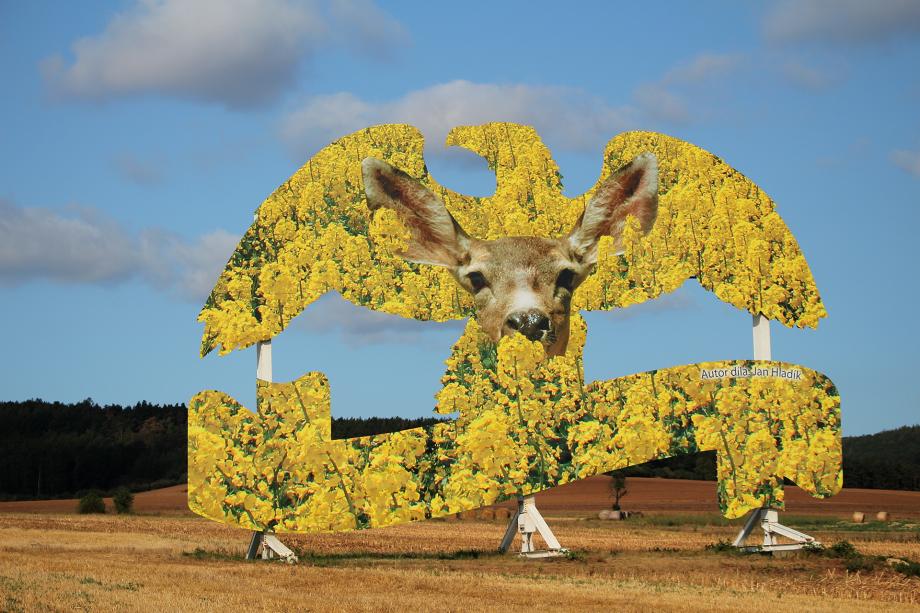
A 2017 amendment to
the Road Act requires the removal of billboards if they are closer
than 250 meters from the highways or 50 meters from first class
roads.
KVM claims the signs now comply with the law. “They now carry an art and non-commercial themes unrelated to any company, so they meet all the requirements of the applicable Road Act,” KMV spokeswoman Brozova said.
However, the
Transport Ministry says they still do not meet the legal
requirements. “If they are in the protection zone for motorways or
first class roads, the operator is still obliged to remove them,”
ministry spokesman František Jemelka said.
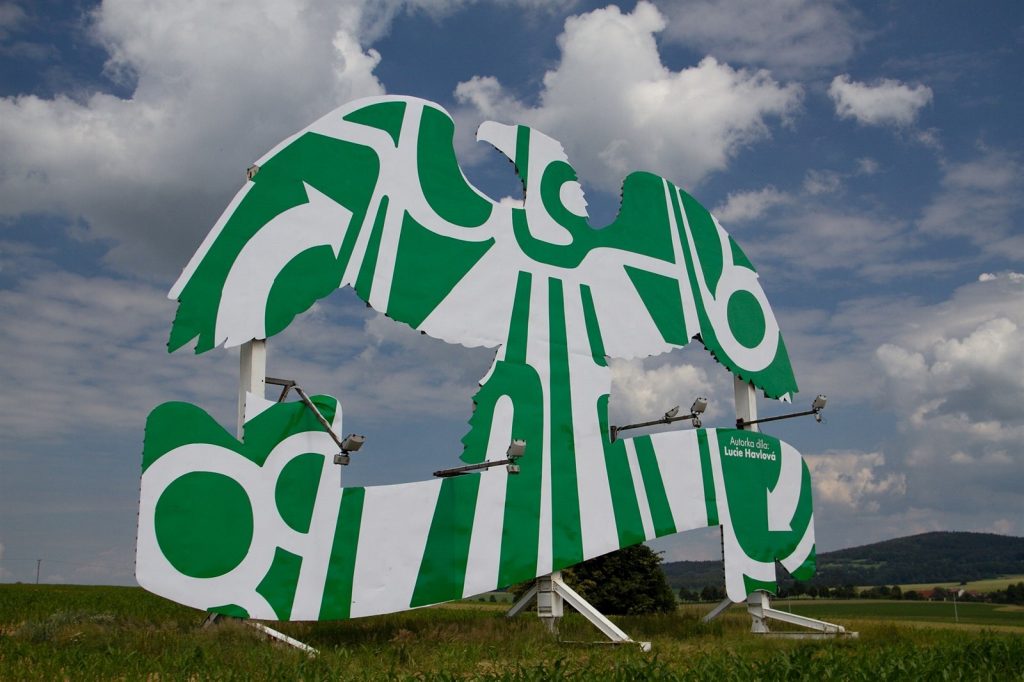
The eagle-shaped
displays weigh 10 tons and are 24 meters wide and 15 meters high.
Converting them takes two or three days. The eagle motif refers to
company founder Heinrich von Mattoni, who had an eagle as a symbol on
the family coat of arms.












 Reading time: 4 minutes
Reading time: 4 minutes 




























